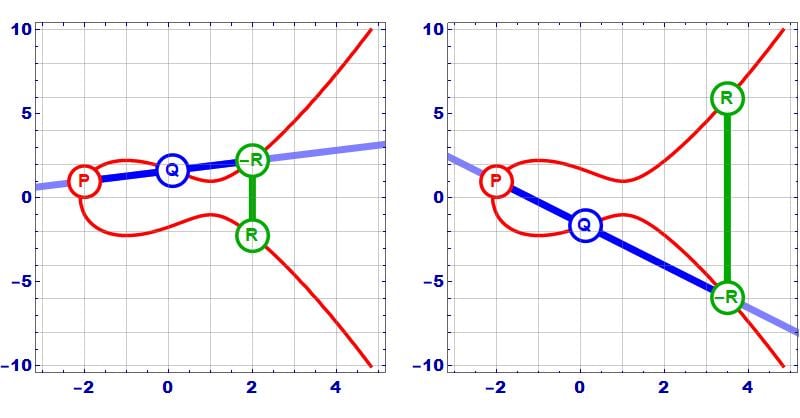Elliptic Curve Cryptography (ECC) represents a remarkable convergence of mathematics and information security, providing a robust framework for securing digital communications. As the mathematical constructs behind ECC may initially appear daunting, they offer substantial rewards in the form of efficient encryption and decryption processes. By exploring simple projects that leverage elliptic curve cryptography, developers and enthusiasts alike can better grasp its intricacies and implementation in real-world applications. These projects promise not only to enlighten but also to sustain curiosity about the field.
1. Building a Basic ECC Key Exchange Protocol
One of the foundational projects in understanding ECC is constructing a basic key exchange protocol using elliptic curves. This can be implemented through the Diffie-Hellman key exchange mechanism, which was adapted for elliptic curves. Participants can learn to generate their private and public keys based on elliptic curves and exchange these public keys to compute a shared secret.
For this project, start by selecting a finite field and an elliptic curve defined over that field. Python libraries like ecdsa or pycryptodome provide the necessary functions to create keys. Following this, create a function to perform point addition on the elliptic curve, revealing how participants derive a shared secret from their public keys. This foundational exercise showcases ECC’s efficiency—requiring significantly shorter keys compared to traditional cryptographic systems while yielding equivalent security.
2. Implementing a Simple Digital Signature Scheme
Digital signatures are pivotal in verifying the authenticity and integrity of messages. Implementing a digital signature scheme based on ECC is another fascinating project that demonstrates how elliptic curves enhance security. The process typically involves key generation, signing, and verifying signatures.
Begin by defining an elliptic curve and generating key pairs. The signing function utilizes a hash function (such as SHA-256) to process the message, resulting in a digest that is then transformed into a signature using the private key. Subsequently, the verification function can be developed to confirm that a message was indeed signed by the holder of the corresponding private key. Emphasizing how compact ECC signatures can be, compared to RSA’s, this project highlights the efficiency of this cryptographic method.
3. Creating an Encrypted Messaging Application
An essential application of cryptography is secure messaging. By developing an encrypted messaging application that employs ECC, participants can experience firsthand the balance between user convenience and stringent security. This project can be approached by building a simple client-server architecture, where each client generates ECC key pairs for encryption and decryption of messages.
Users would register by creating a public-private key pair, sending their public key to the server. Once users connect, they can send messages that are encrypted with the recipient’s public key, ensuring that only the intended recipient can decrypt the message with their private key. This hands-on project allows developers to deal with real-time encryptions and fosters a deeper understanding of public-key infrastructure (PKI).
4. Developing a Blockchain Simulator Using ECC
With the surge in popularity of blockchain technology, a captivating project would involve developing a basic blockchain simulator that uses ECC for securing transactions. The project can begin by defining the blockchain structure, including blocks and chains, while integrating ECC for transaction signing.
Each transaction can be marked with a digital signature, ensuring both integrity and authentication. Implementing a consensus algorithm, such as Proof of Work (PoW), provides insight into how transactions are validated and added to the blockchain. This project not only underscores the versatility of ECC but also illustrates the intersection of modern technology and cryptography in a prime area of interest—decentralized finance, supply chain tracking, and secure voting systems.
5. Exploring Curve25519 for Secure Communication
Curve25519 is a specific elliptic curve known for its exceptional security and efficiency, widely adopted in various applications. As a project, examining Curve25519 for secure communication channels can enhance understanding of ECC’s practical implementations. Users can implement an application that uses Curve25519 for creating secure communication tunnels, like a simplified Secure Shell (SSH) client.
This project involves building a basic client that establishes a secure channel for transmitting data via Curve25519’s Diffie-Hellman exchange. Implement libraries such as libsodium to facilitate cryptographic operations. The result is an invaluable experience, demonstrating how modern cryptographic standards are applied in securing everyday communications.
6. Visualizing Elliptic Curves and Related Algorithms
To drill down into the mathematical foundations of ECC, visualization can be a powerful tool. Create a web application that graphically represents elliptic curves and demonstrates core algorithms such as point addition and point doubling. Incorporate JavaScript libraries like p5.js or three.js for engaging visual representations.
This project not only helps to demystify the underlying mathematics of elliptic curves but also provides a broader audience with the opportunity to engage with complex concepts in a highly accessible manner. The visual simulations can significantly enhance retention and understanding of how operations on elliptic curves translate into cryptographic protocols.
Conclusion
Engaging in these projects promotes a deeper comprehension of elliptic curve cryptography while simultaneously fostering an appreciation for its applications in the digital landscape. As cryptographic methods evolve, the implementation of ECC will undoubtedly remain paramount—delivering efficient, secure, and scalable solutions to contemporary digital security challenges. Each project illuminates distinct facets of ECC, empowering individuals to advance their skills while enriching their understanding of a field that promises to redefine security in our interconnected world.








Leave a Comment